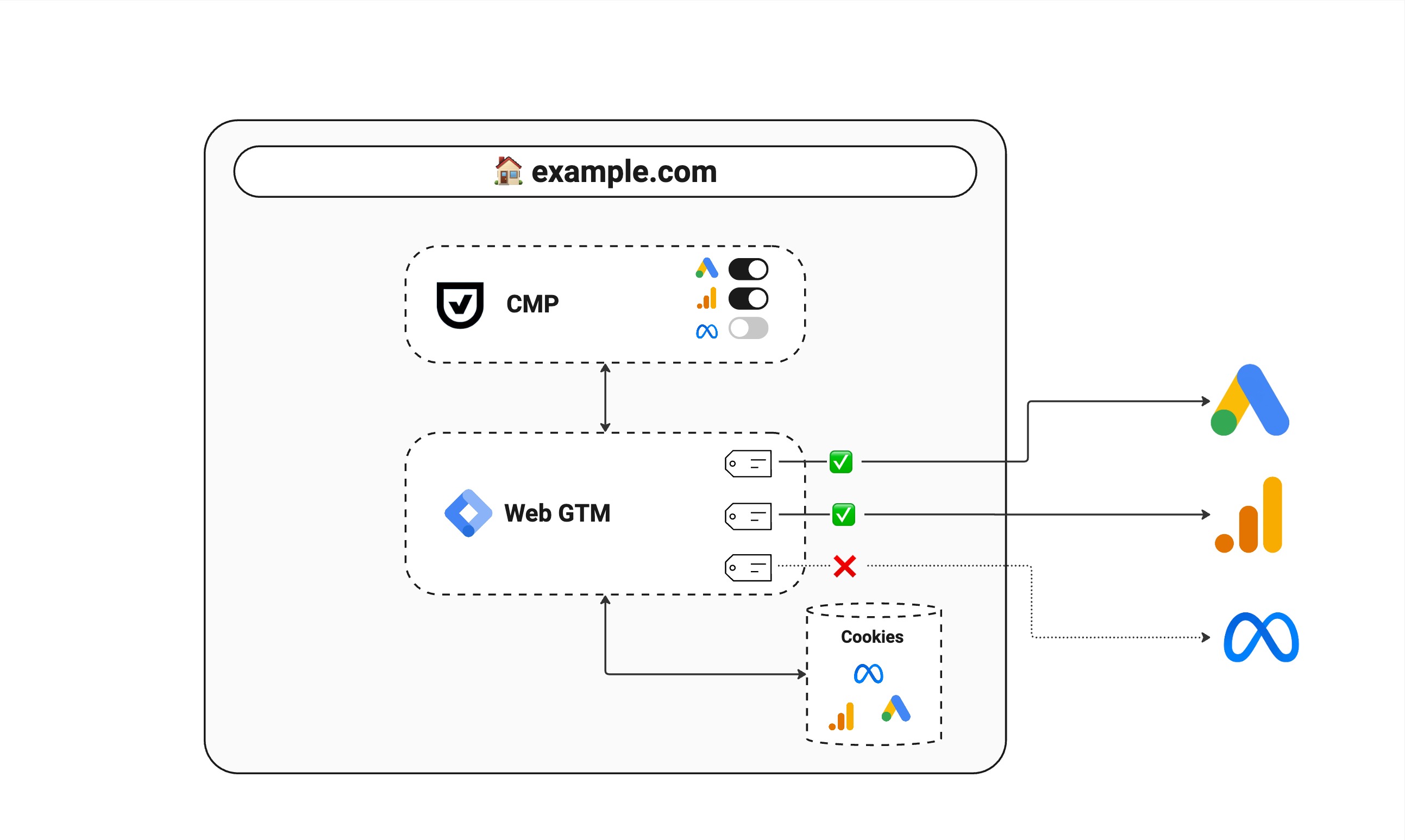Introduction¶
Usercentrics Server-Side Tagging is a fully managed Server-side Google Tag Manager (sGTM) hosting service.
Server-side tagging improves marketing performance by running the measurement infrastructure under a first-party context (i.e. the same domain as your websites). Cookies can now be first-party and be set from the server, improving durability, resilience, and security.
Together with Usercentrics CMP, Server-Side Tagging also improves compliance and data governance by making it easy to respect your customers' consent choices and decide exactly what gets shared with marketing platforms.
Our documentation is organized to help you:
- Get started quickly (with a complete working setup under 15 minutes)
- Understand and deploy use cases for server-side tagging (like web analytics, conversion tracking, and many more).
Key concepts¶
Before we go into the configuration steps let’s make sure we cover key server-side tagging concepts.
Tags and Tag Managers¶
Tags are pieces of code that are triggered when pre-defined conditions are met, and are used for different purposes like capturing user behavior on a website or app, tracking conversions, personalizing an experience, among others.
Traditionally, marketers have relied on tag management systems (like Google Tag Manager) to set up and manage tags that run on their websites, without having to change the site’s code. These tags would run within a web container in the browser (i.e. client-side), and communicate directly with 3rd party systems (like Google and Meta).

Beyond the well known web Google Tag Manager (wGTM) there is also a server version (sGTM) that can work alongside it or even independently of it, as it can receive data from supported servers or client scripts.

Although server GTM is in many ways similar to web GTM, it introduces new components. Let’s go over the most important ones – which will be relevant to understand how the Usercentrics Server-Side Tagging product works.
Server container¶
As the name implies, this type of container is hosted in a server environment, and allows marketers to run tags there instead of the browser. The server container is made accessible under a subdomain(s) as the website(s) associated with it, also referred as a 1st-party context.
Clients¶
Despite the (confusing) name, Clients are pieces of code that are installed on a server container, and are configured to respond to certain endpoints. When they receive data, they generate events, which can be consumed by server-side tags when the right trigger conditions apply.
Transformations¶
Transformations are automated processing mechanisms to selectively allow, exclude or augment data attributes in events. Through transformations we have complete control over the data that tags and 3rd party systems receive.
Next step: get started with server-side tagging¶
Now, let’s get your server-side tagging setup up and running.